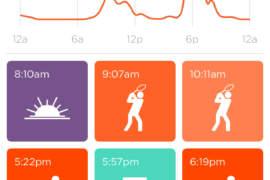If you have an estate planning practice, your target audience for new business is probably middle-aged adults aged 35-44.
Online social media user behavior in that age group tends toward the classification known as “Critics;” those who more often like to react to content published by others. So, give them something to react to: review, rate or contribute to–a survey, a webinar with Q&A, or even a user-based wiki.
If your practice is mergers and acquisitions and your target audience for new business is established businesspersons or corporate counsel aged 45-54—give them something to read.
User behavior in this age group tends toward the “Spectator” class; those who consume what the rest produce. They read blogs, watch videos, listen to podcasts, read online forums, ratings, and reviews.
If you’re building a consumer based practice and your target audience for new business is young men and women consumers aged 25-35—give them something to join. Why?
Young men and women are more likely to be Joiners (71%) almost twice as often as U.S. adults aged 45-54 (38%) who are more likely to be spectators—soaking up the content you post.[1]
Getting a grasp on user behavior is an important step in an actionable picture for your social media strategy; i.e. where your resources are best spent.
Study user behavior.
The top Websites today are places not placeholders. They are sites where people go to do something. Have you noticed that in many instances the word visitor has been replaced with the word user? In fact, 25% of search results for the World’s Top 20 largest brands are links to user-generated content.
But, to truly create a law practice specific social media strategy, as I mention in the opening paragraphs, it’s really important to understand that not all users are the same. In fact, the variety of behaviors have been codified as social technographics by Charlene Li and Josh Bernoff in their 2008 game-changing book, Groundswell. (Here’s a link to a very cool tool that you can use to build your very own customer profile social technographic!)
To review their classifications, users fall into the following categories:
- Creators publish blogs and web pages, create and upload videos, write and post articles or stories, start conversations on Twitter, write applications (apps) for Web sites and mobile devices, and contribute to user forums that support those apps.
- Critics react to content published by others. They comment, post reviews of products or services, react to posts on Twitter, contribute to online forum discussions, or contribute to or edit articles in a wiki.
- Collectors use RSS feeds to collect their favorite blog content, procure expansive networks on Linkedin and Facebook, add tags to Web pages and photos, collect and curate videos on YouTube, vote for website content on services like Technorati and Digg, and use #hashtags [2] to re-tweet other people’s content and favorite posts on Twitter.
- Joiners participate in or maintain a profile on multiple social networking sites.
- Spectators consume what the rest produce. They read blogs, watch videos, listen to podcasts, read online forums, ratings, and reviews.
It’s fair to say that all classes of users need and complement each other. For example, it’s easier to react than to create so it’s no surprise there are more Critics than Creators. However, without Creators there would be no content to critique. And, collectors perform a valuable role in organizing and aggregating the content being produced by Creators and Critics making it easier for Spectators to consume it.
It’s also fair to say that a significant amount of cross over exists among classes. Critics and Creators will also be Spectators at times as it takes a certain amount of listening in order to jump in and contribute effectively or create content that others want to consume. Joiners and Spectators tend to cross over into the Creator or Critic classes when they find their comfort zone in a particular network or review site.
I have seen lawyers be quite successful operating in all classes. So, this is also a helpful benchmarking tool, not only for determining what you should do, but also how you will accomplish it. When allocating your resources across your social media strategy, you’ll need a combination of classes on your team. In larger practice groups you should find each participants strength according to these classes and use them explicitly to meet your goals.
Determining individual preferences requires an analysis of skill sets as well as comfort levels with things such as privacy, confidentiality and positioning. Objectives and business cases will also figure into how the team and individuals participate, including considerations such as the ability of the individual to convert casual business relationships into clients.
CASE ON POINT
I’ve been known to rant about the lack of comments on lawyer-authored blogs, benign Facebook pages, and merely self-promotional Twitter streams. BUT, taking into account that most lawyer-created content is targeted at the spectator class it would seem that my arguments are misinformed. ( I was wondering if anyone would rebut them…but, because I didn’t get push back can I conclude that my readers are mostly spectators? That’s good information to know!)
Conclusion
Determining user behaviors of both audience and creators at the onset of developing a social media strategy should save you a lot of wasted motion and will save you the time spent worrying that you aren’t reaching for appropriate goals.




